On October 29, at the 2025 Golden Globe Science and Technology Awards Ceremony, Dr. Tran Ngoc Vinh could not hide his emotion and pride when his research work was honored.
Stepping onto the stage amidst the applause of his talented colleagues, the young scientist felt both pride and remorse.
About a month ago, Dr. Vinh's hometown ( Bac Ninh ) had to struggle to cope with serious flooding due to the influence of storm No. 11 (storm Matmo).
The moment of being named was a great pride, but it was also a sad moment when the flood forecasting project, which brought the award, could not contribute to helping the homeland reduce the heavy loss of life and property.
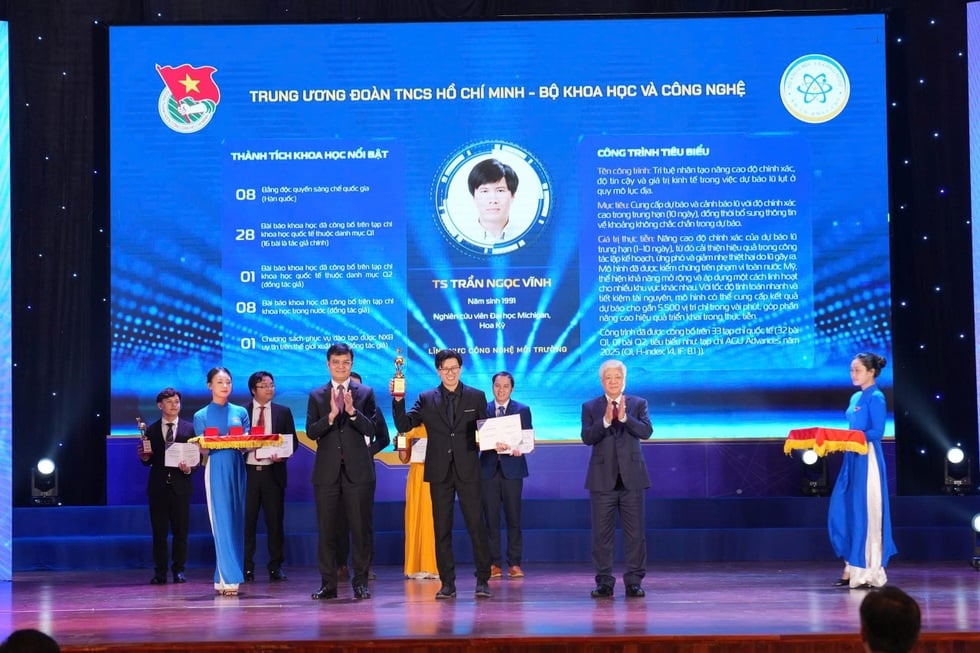
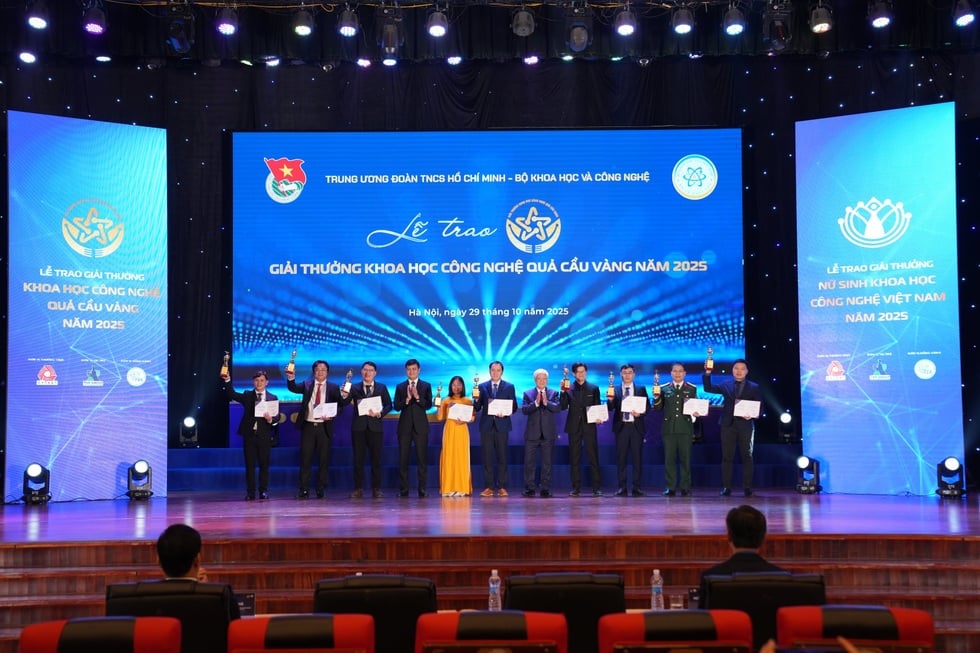
In fact, in 2025, natural disasters in Vietnam will occur frequently and with increasing severity, seriously affecting the lives and production of people across the country.
Heavy rains, flash floods and successive storms pose increasing challenges to disaster forecasting, response and prevention.

Rising floodwaters have caused many communes along the Thuong River (Bac Ninh) to be deeply submerged due to the effects of storm No. 11 (Photo: Manh Quan).
In that context, Dr. Tran Ngoc Vinh's research is considered a breakthrough in flood forecasting when combining artificial intelligence (AI) with physical models, giving an accuracy 6 times higher than traditional methods.
The work was published in the flagship journal of the American Geophysical Union (AGU), which publishes fewer than 100 studies each year.
The work "Quiet Sa Pa" opens the way for young scientists to research
What made you determined to pursue flood forecasting, you must be very passionate or continuing your family tradition?
- I graduated from the University of Natural Sciences and worked as a researcher at the school until 2017, majoring in Earth sciences, specifically hydrometeorology.
In the same year, I received a PhD scholarship in Korea, with my main research direction being flood forecasting in rivers and urban flooding.

Dr. Vinh attended a training course on water resources management by UNESCO on Jeju Island, South Korea in 2021 (Photo: NVCC).
Before completing my thesis, I started applying for jobs in the US and was lucky to receive 10 offers from universities.
Ultimately, I chose the University of Michigan, where I have worked and researched to this day.
Back in high school, I knew almost nothing about the field of hydrometeorology, except for the image of the young man working as a meteorologist on the top of Yen Son mountain in the work "Quiet Sa Pa" that I learned in the Literature book.
When I registered my wishes, I only thought of "key" industries such as economics , information technology or construction.
The opportunity only really came when I failed my first wishes.
In my first year of college, I had almost no idea what job my major would involve.
It wasn't until my third year, when I started participating in scientific research projects and received dedicated guidance from teachers, that I gradually realized the significance of this field and truly loved the major I had chosen.
I had the opportunity to go to many places across the country to measure rivers, seas, currents, meteorology...
It was those trips that made me realize how beautiful and rich my country is, and at the same time, experts and doctors from home and abroad taught me a lot.
What experts and teachers have inspired you?
- Partly true, however, when witnessing the scene of people in the Central region having to face floods every year.
Rivers like Lam and Thu Bon rivers rise whenever there is heavy rain, causing damage to people. This fact always makes me wonder how to forecast more accurately to minimize risks.
My research interests focus on river flooding and urban flooding.
The application of artificial intelligence (AI) is essentially just a new method to improve accuracy, following on from previous mathematical and physical models.
As AI advances, I want to see how much this technology can improve forecasting.
The joy of the Golden Globes and the anxiety of flood forecasters
When your research was announced and you held the award in your hand, how did you feel?
- This is my second year being nominated but my first year in the top 10, being recognized for my efforts is a valuable recognition.
Perhaps partly due to the timing when the North, facing consecutive floods, the applied value of the research was recognized and received more attention.
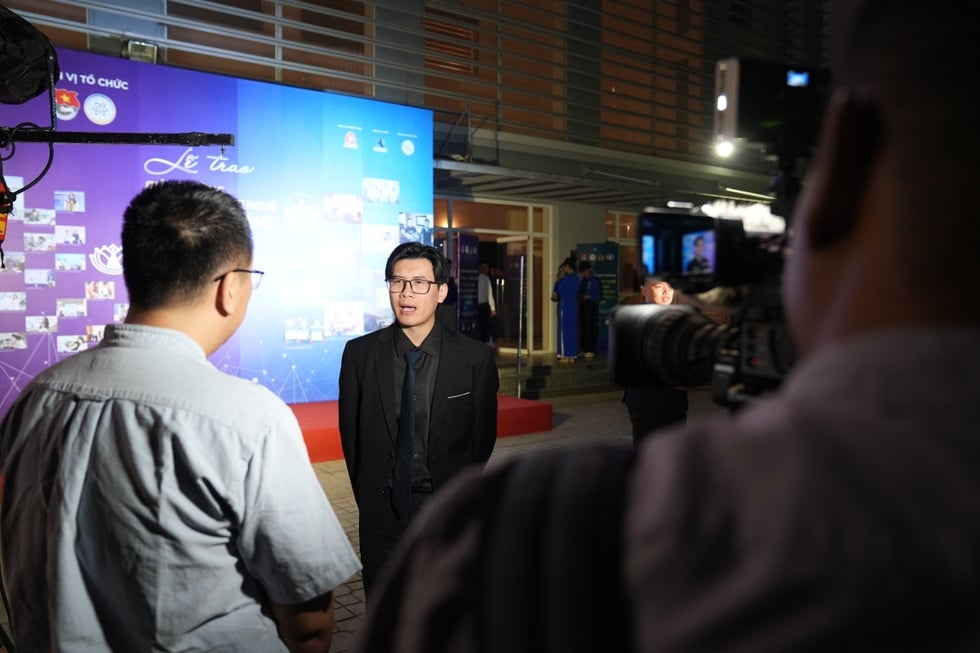
Dr. Vinh is the co-author of 8 patents, dozens of articles published in Q1 journals and several specialized books in the field of hydrology (Photo: NVCC).
But that joy was mixed with many worries, when many places across the country were flooded, especially in my hometown Bac Ninh, which made me feel very sad.
There are times when we feel helpless, because even though we have the data, there is no way to get that information to the people in the fastest and most effective way.
What is the ultimate goal you want to achieve with this project?
- My work does not stop at creating more accurate forecasting models, the goal is to contribute to reducing risks and damages caused by floods.
I want to develop a two-way interactive forecasting system where information comes not only from the authorities, but also from management groups, businesses, and even citizens.
The more important part lies in the connection, communication and decision-making stages, so that forecast information reaches people in a timely and clear manner.
In your opinion, what are the major limitations in flood forecasting and communication work today that make people passive in the face of natural disasters?
- In fact, most of the information is just at the level of "heavy rain forecast", while what people want to know is which areas, rivers or streets are at risk of flooding so they can proactively respond.
One easily seen fact is the lack of quality of flood forecasts from official sources but the abundance of unofficial forecasts from “network experts”.
Forecast information that is "clickbait" can cause misunderstanding and confusion in the community.
Meanwhile, the lack of forecasts with long forecast time steps (forecast results need to be informed to people several days in advance) leads to very limited response to natural disasters at present.
The recent flood in Bac Ninh is a typical example showing that people only "start to respond" when the water level in the rivers has risen very high and is about to overflow the banks, at which point people only have time to mobilize forces to build dikes and move assets.
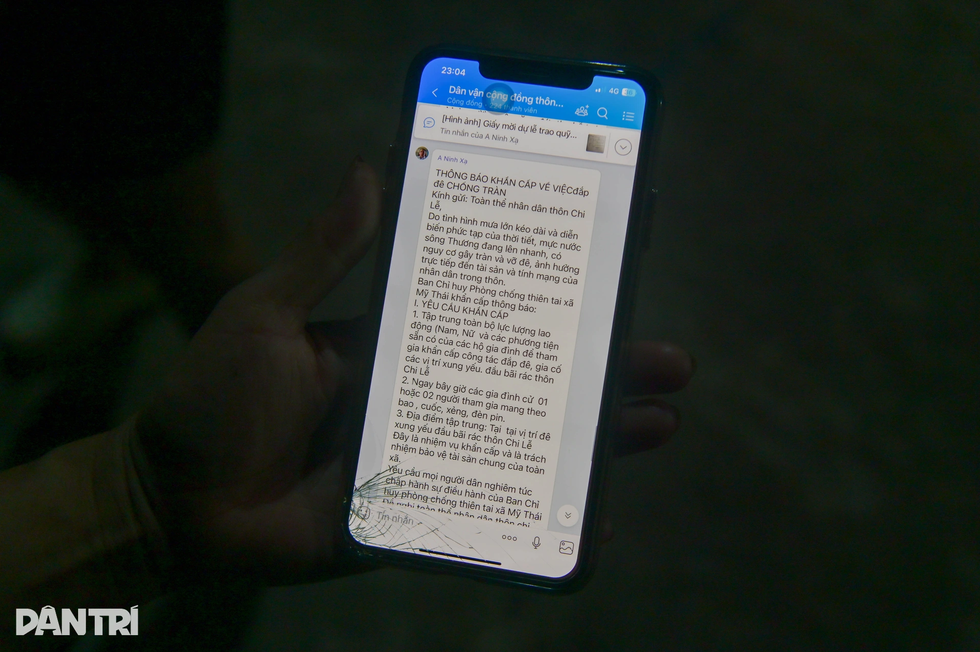

These are emergency, situational measures.
But if there was a forecasting system that was early enough and detailed enough, people could have been much more proactive and damage would have been significantly reduced.
The bottleneck of the urban flooding problem
Artificial intelligence brings fast forecasting capabilities but has many potential risks. How do you control that "dark side"?
- During the project, I experienced many difficulties and failures, especially the difficult problem of collecting clean and comprehensive data sources.
Actual measurement data is often inconsistent, leading to poor forecast results when applying the model from the Central to the Western United States, especially in rocky basins, becoming the "graveyard" of forecast models.
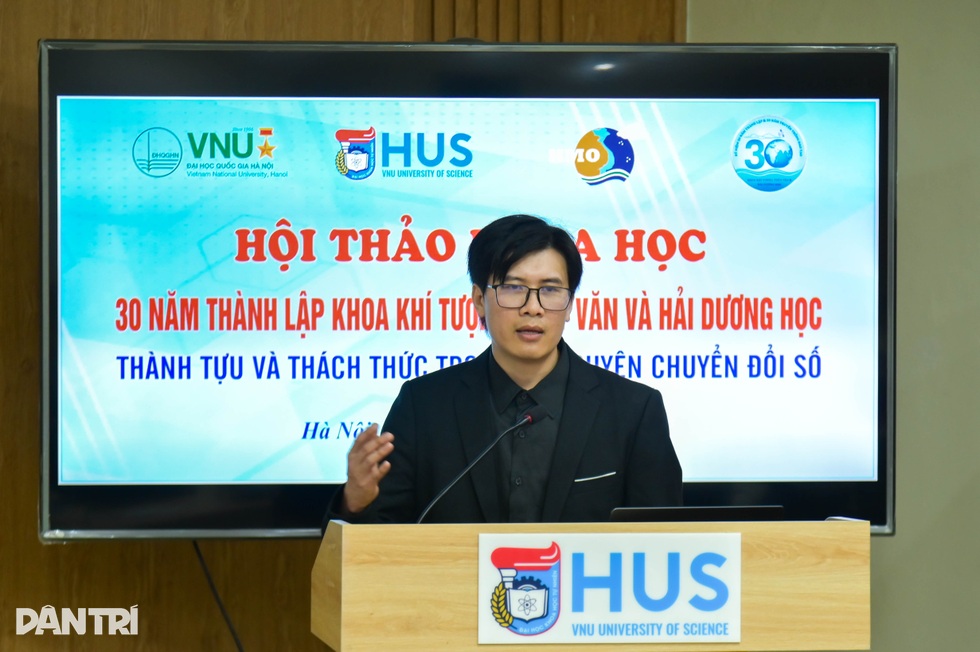
Dr. Vinh and his colleagues developed a new modeling framework, combining AI and the National Water Model (NWM) flood forecasting model, to help reduce errors in flood forecasting programming and make more accurate predictions (Photo: Vu Thanh Binh).
In the field of flood forecasting, artificial intelligence can produce good results, but its effectiveness depends greatly on the quality of the data.
It cannot fully grasp the physical nature, the model needs to be thoroughly tested before application, combined with human experience to ensure reliability.
At the University of Michigan, thanks to high-performance computing, the model training process takes just 1-3 days, while using conventional systems, this work can take up to a month.
In Vietnam, if there is strong investment in basic science, the application of AI in flood forecasting will no longer be a distant dream.
From a researcher's perspective, what do you think is the cause of Hanoi's flooding after every heavy rain, despite investment in flood prevention?
- In fact, Hanoi is still flooded despite investment in infrastructure, road and sewer construction, but there has been no basic research to understand the nature of the urban flow network.

Heavy rain on October 7 caused severe flooding on many streets in Hanoi (Photo: Vu Thanh Binh).
The underlying cause can be explained as the current drainage system is not capable or not working effectively in draining the flood.
One of the reasons for the ineffectiveness of the flood drainage system is that many manholes are covered with garbage, preventing rainwater from draining away, significantly reducing the operational efficiency of the entire system.
Every time it rains heavily, garbage flows into the sewers, causing local blockages.
Meanwhile, sewer maintenance and dredging work faces many difficulties due to high population density and huge amount of domestic waste.
Just 0.1-1% of the millions of Hanoi residents littering illegally is enough to seriously affect the urban drainage system.
Basic scientific research helps to understand the nature of why a point is flooded and which direction the water drains, which will help us to allocate and regulate the flow reasonably, and at the same time support managers to plan more effective infrastructure investments.
Do you plan to return to Vietnam to work to solve your concerns?
- I always hope to have the opportunity to return to Vietnam, if I can continue to develop myself and pursue my cherished research directions, while still ensuring my financial security to take care of my family.
Balancing life, both career and family responsibilities, is extremely important.
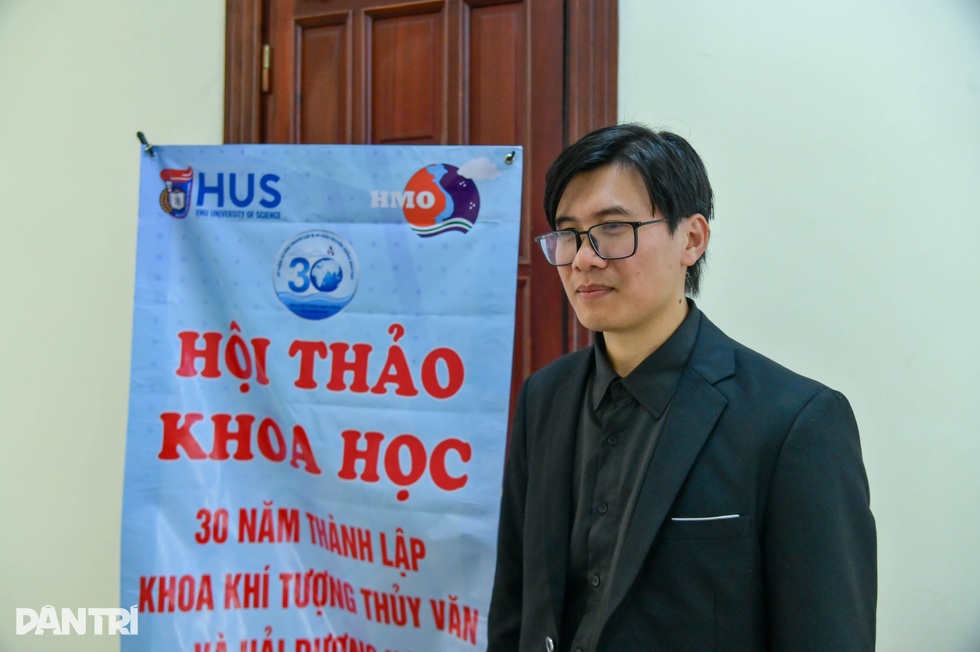
Dr. Tran Ngoc Vinh on his return to the University of Natural Sciences to attend the 30th anniversary celebration of the Faculty of Hydrometeorology and Oceanography (Photo: Vu Thanh Binh).
In addition, up to now the budget for earth science, especially for flood disaster forecasting, is at a low level. The largest projects cost only about 5-10 billion VND.
Obviously, the budget of a project will determine the quality of its output. Limited investment leads to limitations in data, technology or computational systems used for research.
Thanks TS for the chat!
Source: https://dantri.com.vn/khoa-hoc/chu-nhan-qua-cau-vang-truy-vet-du-lieu-dua-du-bao-lu-chinh-xac-gap-6-lan-20251114153912464.htm



![[Photo] Prime Minister Pham Minh Chinh meets with representatives of outstanding teachers](https://vphoto.vietnam.vn/thumb/1200x675/vietnam/resource/IMAGE/2025/11/15/1763215934276_dsc-0578-jpg.webp)



![[Photo] General Secretary To Lam receives Vice President of Luxshare-ICT Group (China)](https://vphoto.vietnam.vn/thumb/1200x675/vietnam/resource/IMAGE/2025/11/15/1763211137119_a1-bnd-7809-8939-jpg.webp)


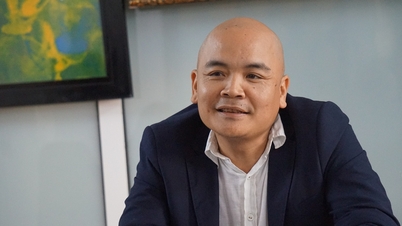



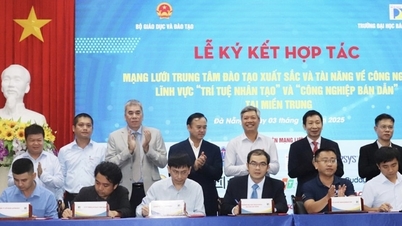









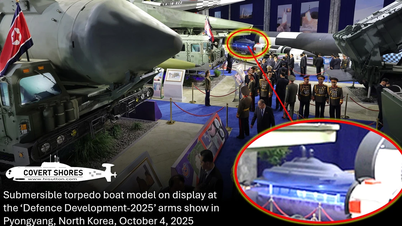









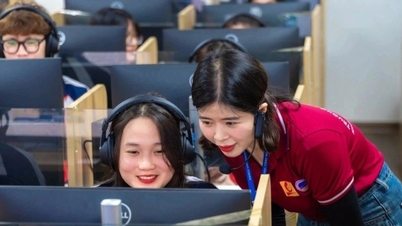














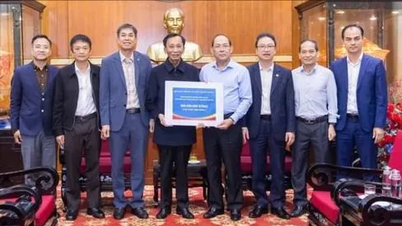





































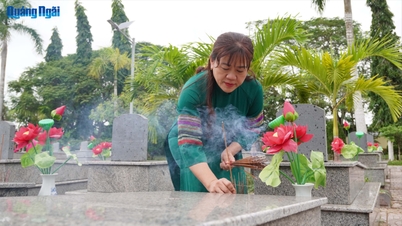














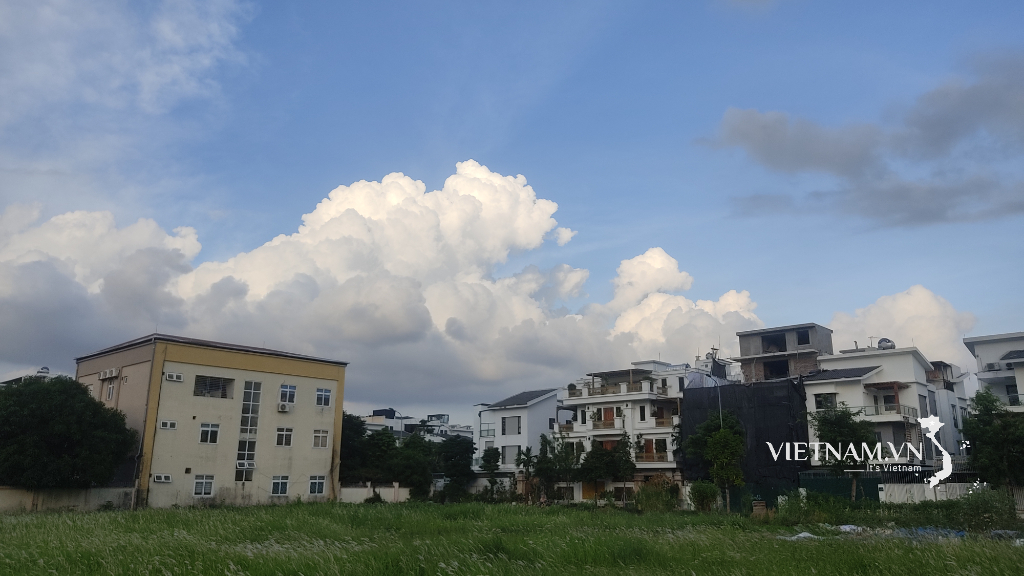


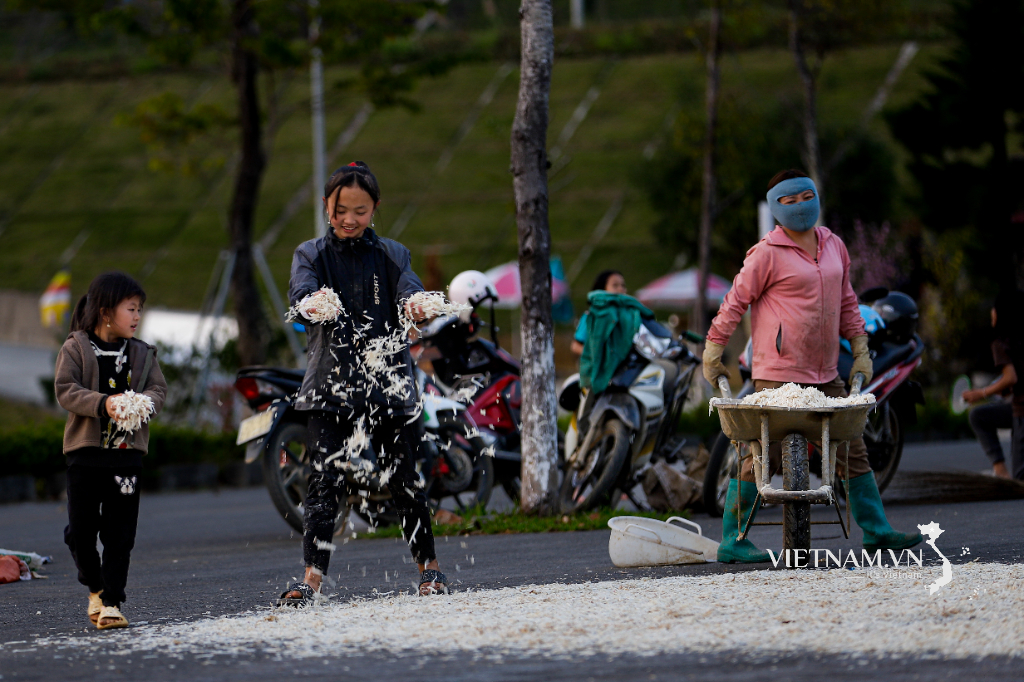
Comment (0)